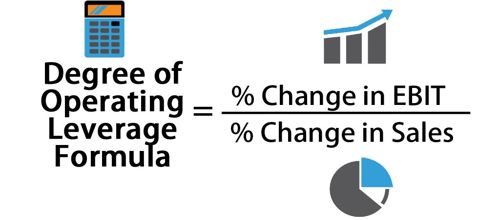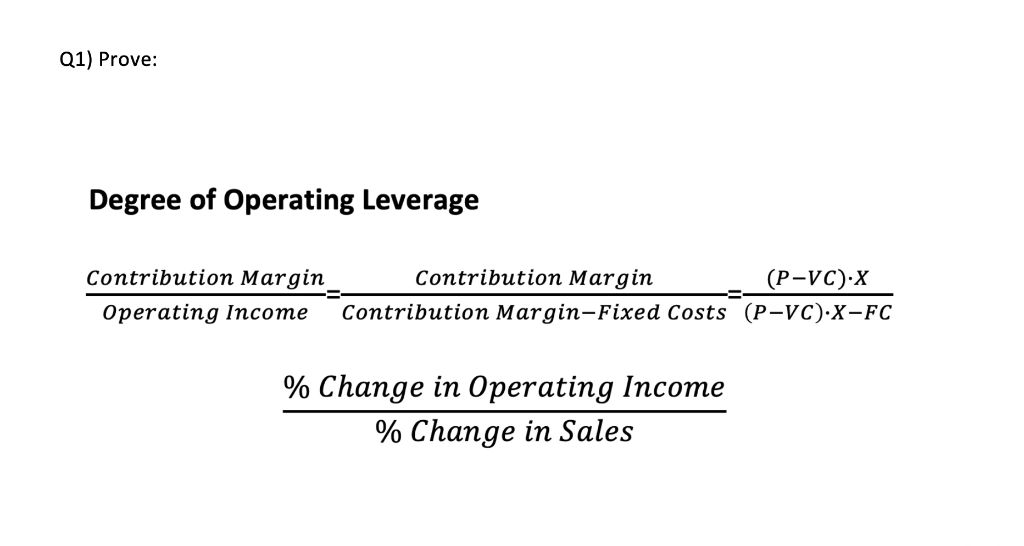
It’s like a financial magnifying glass, showing how your fixed and variable costs can amplify changes in sales into larger changes in operating income. Use this calculator to easily determine the Degree of Operating Leverage (DOL) for your business. Simply input the values for sales, fixed costs, and variable costs to get the result. The DOL indicates how sensitive your operating income is to changes in sales volume.
What Is the Difference Between Operating Leverage and Financial Leverage?
- As a hypothetical example, say Company X has $500,000 in sales in year one and $600,000 in sales in year two.
- The DOL calculator is one of many financial calculators used in bookkeeping and accounting, discover another at the links below.
- If sales revenues decrease, operating income will decrease at a much larger rate.
- The calculator produces the income statement of the business based on the quantity of units entered in Step 2.
- A company with a high DOL coupled with a large amount of debt in its capital structure and cyclical sales could result in a disastrous outcome if the economy were to enter a recessionary environment.
- Typically, companies that have a large proportion of fixed cost to variable cost have higher levels of operating leverage.
If you’re looking to calculate the degree of operating leverage quickly and without carrying out lots of manual calculations, simply use our degree of operating leverage calculator. The calculator produces the income statement of the business based on the quantity of units entered in Step 2. Integrate DOL calculations into your financial planning strategies for better long-term decision-making. Understanding how changes in sales volume affect your operating income allows for more precise forecasting and budgeting. Use the calculator as a strategic tool for enhancing your financial planning efforts.

Free Financial Modeling Lessons
Operating leverage measures a company’s fixed costs as a percentage of its total costs. It is used to evaluate a business’ breakeven point—which is where sales are high enough to pay for all costs, and the profit is zero. A company with high operating leverage has a large proportion of fixed costs—which means that a big increase in sales can lead to outsized changes in profits. A company with low operating leverage has a large proportion of variable costs—which means that it earns a smaller profit on each sale, but does not have to increase sales as much to cover its lower fixed costs.
Assess the Impact of Fixed Costs on Profitability
Operating Leverage is controlled by purchasing or outsourcing some of the company’s processes or services instead of keeping it integral to the company. Another way to control this operational expense line item is to reduce unnecessary expenses, especially during slow seasons when sales are low. In fact, there’s a relation between the two metrics, as the operating earnings can be increased by financing.
Formula:
The higher the degree of operating leverage, the greater the potential danger from forecasting risk, in which a relatively small error in forecasting sales can be magnified into large errors in cash flow projections. On the other hand, a company with a low DOL has a huge portion of its overall cost structure as variable costs. A company with a high DOL can see huge changes in profits with a relatively smaller change in sales. If you’re still having problems calculating the DOL of your business, you can always use our deduction checklist and other helpful tools on CalcoPolis.
How confident are you in your long term financial plan?
In year one, the company’s operating expenses were $150,000, while in year two, the operating expenses were $175,000. The operating margin in the base case is 50%, as calculated earlier, and the benefits of high DOL can be seen in the upside case. Common examples of industries recognized for their high and low degree of operating leverage (DOL) are described in the chart below. Yes, but ensure you’re comparing companies within the same industry or sector, as operating leverage can vary significantly between different types of businesses.
Companies with high fixed costs relative to variable costs will exhibit high operating leverage, meaning their earnings are more volatile with changes in sales. This can be beneficial in periods of rising sales but risky when sales decline. A higher degree of operating leverage equals greater risk to a company’s earnings. For example, a software business has greater fixed costs in developers’ salaries and lower variable costs in software sales. In contrast, a computer consulting firm charges its clients hourly and doesn’t need expensive office space because its consultants work in clients’ offices.
The DOL is calculated by dividing the contribution margin by the operating margin. For example, the DOL in Year 2 comes out 2.3x after dividing 22.5% (the change in operating income from Year 1 to Year 2) by 10.0% (the change in revenue from Year 1 to Year 2). Revenue and variable costs are both impacted by the change in units sold since all three metrics are correlated. Therefore, each marginal unit is sold at a lesser cost, creating the potential for greater profitability since fixed costs such as rent and utilities remain the same regardless of output. The more fixed costs there are, the more sales a company must generate in order to reach its break-even point, which is when a company’s revenue is equivalent to the sum of its total costs.
